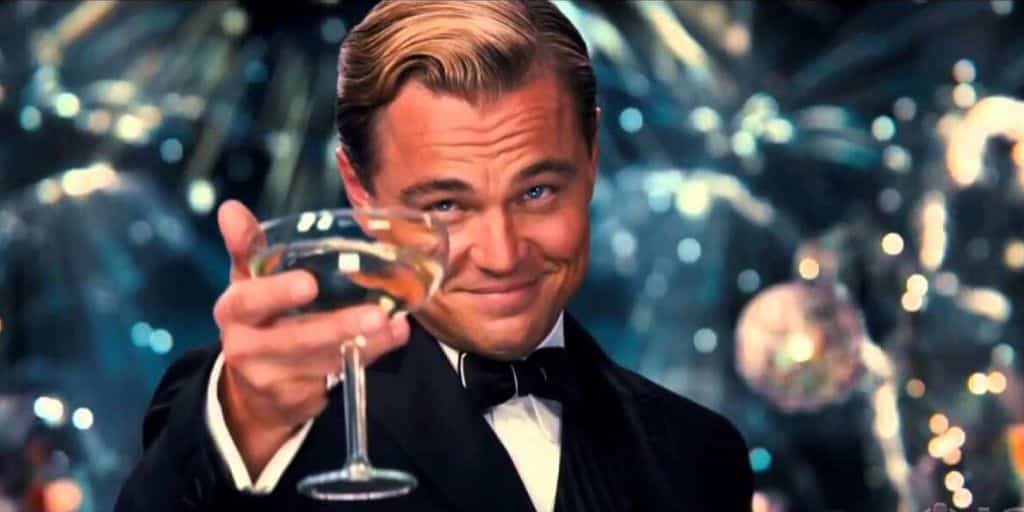Read about the key themes of The Great Gatsby
The main themes of The Great Gatsby bear directly on the novel’s main issue – its criticism of the American Dream as an ideal that can be achieved. Most American literary novels deal in some way with this great national ideal: it would be difficult for an American writer to write a novel or play that does not in some way connect with the idea of the American Dream.
The American Dream
The romantic idea of a man born in a log cabin and rising in life to eventually inhabit the White House is the model on which the American Dream is based. Even American writers of the early days of the Republic dealt with this theme – the belief that every man, and woman too, in more recent times, no matter how humble his or her beginnings, has the freedom and ability to pursue and attain any goals they choose, whether they are financial, social or political, and that they can achieve them. Abraham Lincoln is held up to children as a prime example of the success of the American Dream.
America’s borders were open, and the poor, persecuted, and even destitute, were welcomed without restriction to what was called ‘the land of opportunity.’ There are countless personal stories of men and women who arrived with only the clothes they were wearing and rose to the top of American life.
The Great Gatsby is a criticism of that ideal. Jay Gatsby, seemingly proof of the success of the Dream, demonstrates its complexities and ultimate failure instead. He becomes very wealthy but his inability to gain acceptance in class conscious high society reveals the inadequacy of the American Dream.
The failure of the American dream
In the eyes of the world, Jay Gatsby represents the affirmation of the American dream and proof of its success. He has come from a very humble background and achieved enormous wealth.
He’s not happy though. In spite of his wealth he has no connection to anything meaningful. He is rejected by the established wealthy Long Island community. Money does not ensure one’s place in the top layers of American life and all he gets is people taking advantage of his ability to host expensive parties, without even being able to recognise him. It is clear from Gatsby’s experience, that the American dream is not fully available, even to the richest.
Gatsby believes that he is the embodiment of the American dream because the growing affluence of the Roaring Twenties produced a culture of materialism where the acquisition of wealth became the criterion of success. That was not what the original concept of the American dream was. It was success, but in those early days of population expansion by immigration success was not to do with money – it was to do with such things as survival, independence, social integration, and a life of peace. The Great Gatsby suggests that consumerism has debased the American social landscape and compromised the country’s most fundamental ideals. In that context ‘the American dream’ has become a meaningless phrase and the pursuit of it a hollow dash for cash.
Wealth and class
Set in the period between the two world wars, specifically the 1920s, or “the roaring twenties,” – in Fitzgerald’s phrase, “the jazz age” – the novel is a richly painted portrait of the decade of prosperity and decadence that followed the Great War. It was characterised by easy money and lavish parties with hard-drinking – in spite of the Prohibition – and huge optimism.
The Great Gatsby depicts what we normally think of as a classless society. However, the novel questions that, and portrays three distinct social classes: the old moneyed, the newly moneyed, and the moneyless.
The old money class, those families whose fortunes originated in the eighteenth and nineteenth centuries and have built up powerful social and political connections, is represented by Tom and Daisy Buchanan. The new money class consists of the many people who are taking advantage of the burgeoning economy to make themselves rich, represented by Gatsby, suspected of having made his money by bootlegging (smuggling or manufacturing and distributing liquor). George and Myrtle Wilson are struggling ‘losers’ – the no money class.
The Buchanans represent the richest of New York’s old rich society. Fitzgerald presents them with all the decadent qualities of their class – hedonism, wastefulness, and, above all, carelessness. It is Daisy’s carelessness – carelessness with other people – that eventually gets her the narrator, Nick Carraway’s, harshest condemnation.
Gatsby is just as rich – perhaps even more wealthy than the Buchanans – but he is far from being their social equal: they still think of him as the nobody from nowhere. Daisy genuinely loves him but in the end, she goes back to the life that protects her from the world, including protection from her responsibility for her actions. She chooses not to leave Tom for Gatsby. She simply cannot bear to lose the social advantages she has in her marriage to Tom. Marriage to Gatsby would not affect her material standard of living but by marrying him she will have placed herself in a less advantageous social class.
When, as a poor officer, Jay Gatsby was courting Daisy before he went overseas to fight in the war they were in love, but he had to leave her. While he was away she married Tom, but now, as they resume their affair, her excuse for having married Tom is “rich girls don’t marry poor boys.” But it’s more than a matter of money it’s also a matter of girls in the top social class not marrying boys who are not. The novel asserts that no matter how rich you become in America you encounter a ceiling that prevents you from achieving the American Dream.
George and Myrtle Wilson are portrayed as desperate. George desperately wants to buy Tom’s car so that he can make a bit of cash by selling it on, and Myrtle gets herself killed by a desperate bid to join her lover. Her association with Tom only occurs because she is beautiful and sexy, and she’s likely to be dropped in favour of a new mistress at any time. Wilson’s desperate financial situation has affected his health and he has no way of making any improvement in his life. His final act is suicide.
Love
In The Great Gatsby, love is linked to class. The young officer and the rich girl had no chance of a real relationship. Daisy deluded herself by promising to wait for him when he went off to the war. Instead, she is now in a loveless relationship as a result of her marriage of convenience to a man in the same class as hers. He has no romantic interest in her and has serial affairs. She likewise has no romantic interest in him.
Tom’s mistress, Myrtle, is a high-spirited, adventurous, vibrant woman married to a very dull unambitious man. She married him in the hope of improving herself but after a short miserable marriage she ends up dead. Nick and Jordan’s mutual attraction leads nowhere. Ironically, the only relationship that succeeds on any level is Daisy and Tom’s. With no love, and serious marital problems, they retreat into a bubble of wealth and social status in which they are miserable together.
The novel’s general view of love is a cynical one. Even the one relationship that seems genuinely loving – Gatsby and Daisy – is an aberration. It is based on Gatsby’s obsessive determination to rewrite his own past. He is in love with an ideal of a perfect woman, whereas the real Daisy is shallow and selfish and ultimately careless with his feelings.
That’s our take on The Great Gatsby themes. Make sense? Any questions? Let us know in the comments section below!

Leonardo DiCaprio plays Gatsby in the 2013 movie




Leave a Reply
Want to join the discussion?Feel free to contribute!